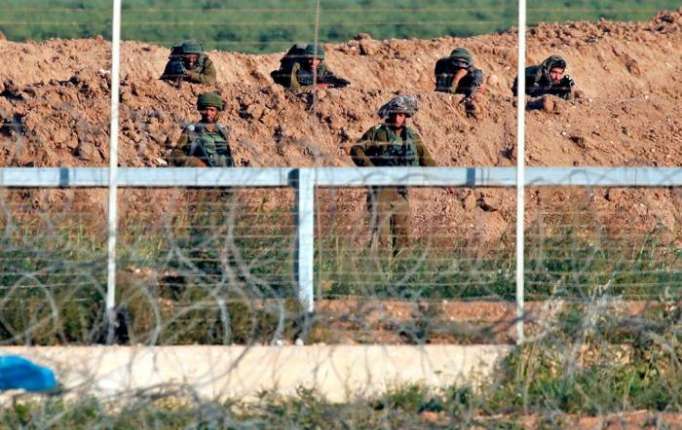A snaking metal fence that divides the Gaza Strip from Israel has become the latest focal point in a generations-long conflict between Arabs and Jews in the area.
It was along this fence that at least 60 Palestinians were killed and many hundreds wounded on Monday as thousands converged to protest what they call an arbitrarily enforced demarcation line by an occupier. As protesters rushed toward the fence, some throwing rocks or homemade fire bombs, Israeli soldiers fired live bullets, which the Israeli military said was done as a last resort.
What are the fence’s origins and purpose in separating Gaza, a 25-mile-long, five-mile-wide Mediterranean coastal enclave where nearly two million Palestinians live? Is the fence recognized as an international border? And how has Israel justified deadly force to stop mostly unarmed Palestinians from breaching it? Here are the basics:
What is the fence?
The fence is actually two parallel barriers built by the Israelis: a formidable one of barbed-wire within Gaza and a 10-foot-high metal “smart fence” packed with surveillance sensors along the Israel demarcation line. A restricted buffer zone as wide as 300 yards is between them. Israel has warned that people in the zone without authorization risk being subjected to deadly force.
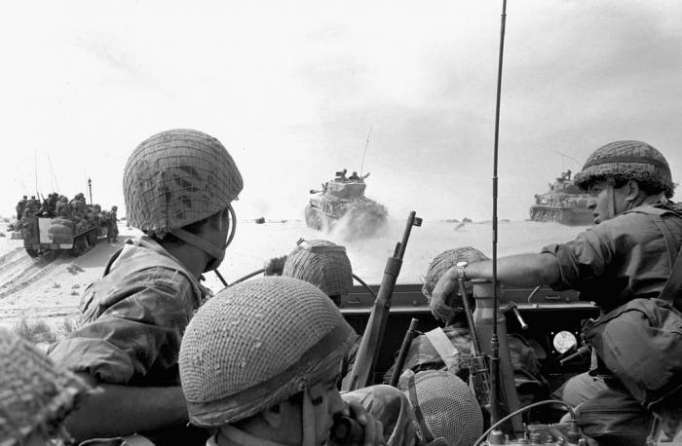
Israeli forces advancing against Egyptian troops at the start of the Arab-Israeli War of 1967.CreditMicha Han/Israeli Government Press Office
What is the history?
Like other parts of the Holy Land, Gaza’s history stretches back to ancient times. It was originally a Canaanite settlement and was variously ruled later by the Israelites, Egyptians, Romans and Ottomans, among others. The British seized the territory during World War I.
Gaza’s boundaries were established in a 1949 armistice agreement between Egypt and Israel, halting the conflict after the creation of the state of Israel in 1948. During the Arab-Israeli war of that period, hundreds of thousands of Palestinians were forced from their homes or fled, many to Gaza, and they and their descendants have been classified as refugees by the United Nations.
Egypt occupied Gaza until the Arab-Israeli War of 1967 when Israel seized the territory.
The first Gaza-Israel fence went up in 1994 as a way to control Palestinian movement after the Oslo Accords — the agreement aimed at ending the conflict between Israelis and Palestinians and establishing a Palestinian state.
Israel withdrew from Gaza in 2005, vacating all Israeli settlements and removing its soldiers. But Israel maintains control of the northern and eastern land boundaries — Egypt controls the southern crossing, known as Rafah — and Israel controls the air and sea approaches. Most Gaza-bound food, fuel and other aid flow through Israeli-controlled crossings.
Like the Israelis, the Egyptians have in recent years restricted the movement of people and goods in and out of Gaza. Both Israel and Egypt imposed a blockade on Gaza after Hamas, the Palestinian militant organization that denies Israel’s right to exist, took control there more than a decade ago.
The deprivations in Gaza have continually worsened. Most of its people rely on aid from the United Nations and other outside groups, and the inability of residents to freely leave has created what human rights advocates call an open-air prison.
Why is the conflict flaring up now?
The “March of Return,” as Palestinians are calling the protest campaign that began in March, was intended by its creators to publicize global awareness that about two-thirds of Gaza residents are considered Palestinian refugees.
The Israelis have accused Hamas, which Israel, the United States and several other countries consider a terrorist organization, of exploiting the “March of Return” to physically attack Israel.
“Hamas has used ‘nonviolent protests’ to attempt to overrun Israel’s border and kill its civilians, and it is Hamas that bears responsibility for the recent bloodshed,” the American Israel Public Affairs Committee, an influential lobby group in the United States, said Wednesday in countering critics of Israel’s bbehaviour
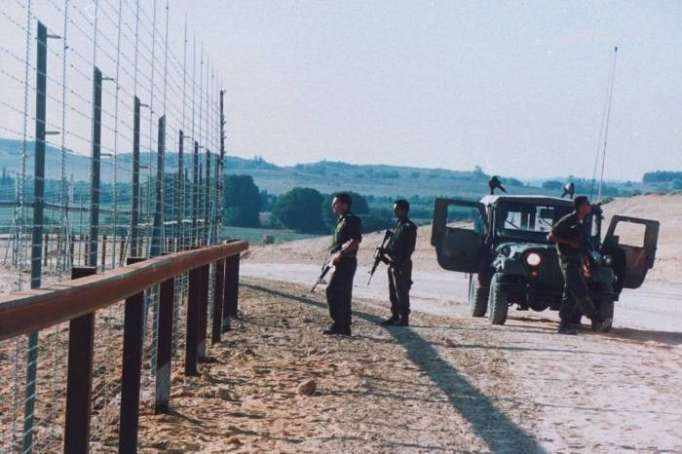
Israeli soldiers patrolling the newly constructed barrier fence in 1994.credit David Rubinger/The LIFE Images Collection, via Getty Images
So is the fence a legal border?
It is not recognized as a border like that between two sovereign nations. While Israel has created what it regards as a defensive buffer zone inside Gaza for security, Israel has not altered the original 1949 armistice line that delineated the territory.
Supporters of a two-state solution to the Israeli-Palestinian conflict foresee Gaza as part of a future Palestinian state. But for now, Gaza’s status is complicated.
“Gaza is not a Palestinian state,” said David Makovsky, an expert at the Washington Institute for Near East Policy. “Part of the problem is that nobody wants Gaza.”
While Egypt could theoretically do more to ease the travails of Gaza’s population, Mr. Makovsky said, “Egypt sees it as political quicksand.”
The Palestinians and United Nations human rights officials say Israel remains an occupying power in Gaza, making it subject to certain obligations to protect civilians under international law, because the Israelis exert effective control over most of Gaza’s land, air and sea borders.
Israel has rejected that argument, asserting that it voluntarily departed Gaza 13 years ago.
“The political point is that each side of this conflict has their own narrative about the status of the Gaza Strip and Israel’s role,” said Tamara Cofman Wittes, a senior fellow at the Brookings Institution’s Center for Middle East Policy. “The argument is not whether this is a border. The argument is whether Israel is occupying Gaza.”
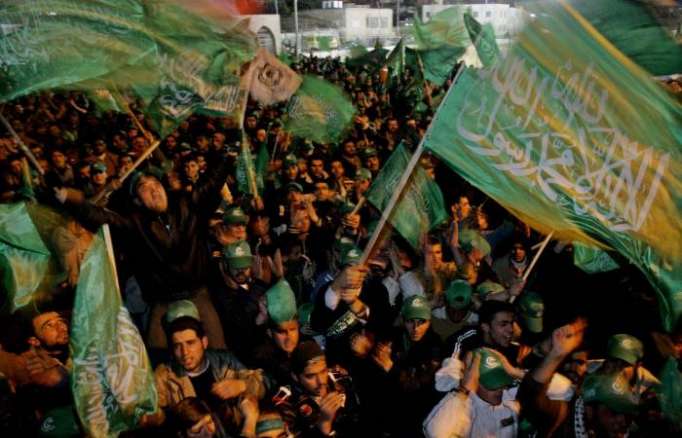
Hamas supporters in Hebron celebrated the results of the 2006 election, which the militant group won. Both Israel and Egypt imposed a blockade afterward.CreditStoyan Nenov/Reuters
Do border protests violate Israel’s sovereignty?
Israel considers attempts by Palestinian protesters to approach the fence a threat to its sovereignty, and has framed its responses to these protests as a lawful defense of the Israeli border. The Israeli authorities have dropped leaflets over Gaza warning Palestinians to not approach the fence.
“The Israel Defense Forces is determined to defend Israel’s citizens and sovereignty against Hamas’s attempts at terrorism under cover of violent riots,” the leaflets read, a position reiterated by Ronen Manelis, a spokesman for the Israel Defense Forces. “A sovereign nation cannot allow this,” he said.
The question of whether the protesters threaten Israeli sovereignty is part of the broader dispute, Middle East scholars say.
Nadia Abu El-Haj, co-director of the Center for Palestine Studies at Columbia University, argued that Israel’s own actions across the fence meant that it was not a border.
“A border implies a place where one state’s authority ends and another’s begins,” Dr. Abu El-Haj said. “Israel has never recognized the fence as a limit to its authority. Through closure and military incursions, Israel sustains its sovereign authority over the territory.”
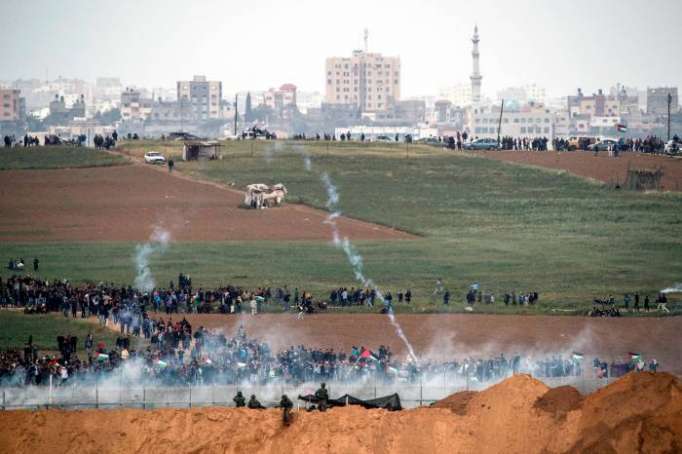
Israeli soldiers firing tear gas toward Palestinian protesters near the border fence in March.CreditTsafrir Abayov/Associated Press
Is deadly force at the fence defensible?
While Israeli authorities have justified the military’s use of deadly force, many international monitoring groups, including Human Rights Watch and Amnesty International, have condemned it. A number of countries at the United Nations have asked for an independent inquiry into the deaths.
Prime Minister Benjamin Netanyahu of Israel said that defending the border fence with lethal force was necessary.
“I don’t know of any army that would do anything differently if you had to protect your border against people who say, ‘We’re going to destroy you, and we’re going to flood into your country,’” Mr. Netanyahu told CBS News.
Other Israelis have said that if thousands of angry Palestinians breached the Gaza fence, the outcome would be far bloodier.
The Israeli military maintains it is only targeting those instigating violence, and has sought to use nonlethal deterrents — including drones that drop tear gas — to counter the protests.
American officials have backed Israel’s actions. Heather Nauert, the State Department spokeswoman, said “Israel has a right to defend itself,” while Nikki R. Haley, the United States ambassador to the United Nations, said Israel had responded with “restraint.”
United Nations human rights officials have disputed that view. Michael Lynk, the special rapporteur on human rights in the occupied Palestinian territory, said the killings on Monday reflected a “blatant excessive use of force by Israel” and likened them to “an eye for an eyelash.”
Mr. Lynk said that protesters appeared to pose no credible threat to Israeli military forces on the Israeli side. Under humanitarian law, he said, the killing of unarmed demonstrators could amount to a war crime, and he added that “impunity for these actions is not an option.”
Megan Specia is a story editor on the International Desk of The New York Times, specializing in digital storytelling and breaking news.
Rick Gladstone is an editor and writer on the International Desk, based in New York. He has worked at the newspaper since 1997, starting as an editor in the Business Day and Sunday Business sections.More
Read the original article in New York Times.
More about: Gaza








